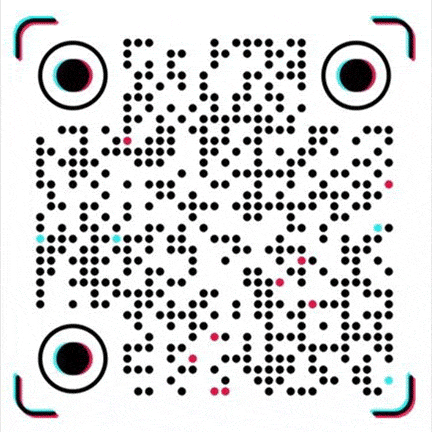Flexibility of Polypropylene
Flexibility is an important property of polymers and is usually described by bending modulus or elastic bending modulus. The bending modulus reflects the ability of a material to resist elastic deformation when it is bent under force.
The lower the value, the easier it is for the material to bend under the same external force, which means that the material has better flexibility. Among the many properties of solid materials, flexibility is not only related to the processing and molding performance of the material, but also directly affects its performance in different application scenarios.
As a widely used thermoplastic resin, polypropylene (PP) has attracted much attention for its flexibility, which is determined by a variety of factors such as its molecular structure, crystal structure and processing technology.
The influence of molecular structure on PP flexibility
From the molecular structure level, the main chain of PP is composed of repeated propylene units with methyl side groups on the molecular chain.
Compared with polyethylene (PE), the methyl groups on the PP molecular chain increase the distance between the molecular chains, and the internal rotation of the molecular chain is hindered to a certain extent. Under ideal conditions, the regularity of the PP molecular chain is high and the crystallinity is relatively high, which will limit the movement of the molecular chain to a certain extent and reduce the flexibility of the material.
For example, isotactic polypropylene (iPP) has a highly regular molecular structure, with a crystallinity of 60% - 70%. Its bending modulus is relatively high, and its flexibility is average. It is often used in injection molding products with high rigidity requirements, such as plastic basins and plastic chairs.
However, atactic polypropylene (aPP) lacks regularity in the arrangement of methyl groups in the molecular chain, making it difficult to form crystals. The molecular chain has a larger activity space, so it has good flexibility and is often used as a toughening agent or modifier to improve the flexibility of other PP materials.
The relationship between crystal structure and PP flexibility
The crystal structure also has an important influence on the flexibility of PP. PP has a variety of crystal forms, including α, β, γ, etc. The crystal structure and molecular chain arrangement of different crystal forms are different. Among them, the α crystal form is the most common crystal form of PP.
Its crystal structure is compact and the molecular chain is arranged regularly, which makes the material have high rigidity, but relatively poor flexibility. β-crystal PP has a unique crystal structure. When subjected to external forces, β-crystals can undergo plastic deformation and absorb energy, thus giving the material better toughness and flexibility.
Through specific processing techniques, such as adding nucleating agents or controlling the cooling rate, PP can be induced to form more β-crystals, thereby improving the flexibility of the material.
Changes in the flexibility of PP due to processing techniques
Processing techniques are also a key factor in changing the flexibility of PP. During the extrusion process, parameters such as temperature and screw speed will affect the molecular orientation and crystallinity of PP. Higher extrusion temperatures will intensify the thermal motion of PP molecular chains, reduce the orientation of molecular chains, reduce internal stress, and help improve the flexibility of the material; while lower screw speeds can keep the material in the barrel longer and crystallize more fully, which may lead to a decrease in the flexibility of the material.
During injection molding, mold temperature and cooling rate are equally important. Lower mold temperature and faster cooling speed will cause PP to crystallize quickly, forming fine crystals, restricting the movement of molecular chains and reducing flexibility; on the contrary, appropriately increasing mold temperature and slow cooling can make crystals grow more fully, giving molecular chains more time to adjust their orientation, which helps to improve the flexibility of PP products.
In addition, the flexibility of PP can also be effectively adjusted through modification processes such as blending, filling, and reinforcement. For example, when PP is blended with ethylene-propylene rubber (EPR), the elastomeric properties of EPR can significantly reduce the bending modulus of PP and improve its flexibility; adding an appropriate amount of plasticizers, such as phthalates, can weaken the forces between PP molecular chains, making the molecular chains easier to slide, thereby enhancing the flexibility of the material.
In practical applications, the flexibility of PP has made it widely used in many fields. In the packaging industry, PP films with good flexibility can be used to make food packaging bags, which can ensure a certain strength while facilitating the folding and sealing of the packaging; in the home appliance industry, PP materials with appropriate flexibility can be used to make washing machine inner drums, refrigerator drawers and other parts, which can not only meet the mechanical performance requirements during use, but also adapt to different assembly and use environments.
With the continuous improvement of material performance requirements, in the future, through in-depth research on the relationship between the structure and performance of PP, combined with advanced processing technology and modification methods, the flexibility of PP will be further optimized and its application areas will be expanded.
Our platform connects hundreds of verified Chinese chemical suppliers with buyers worldwide, promoting transparent transactions, better business opportunities, and high-value partnerships. Whether you are looking for bulk commodities, specialty chemicals, or customized procurement services, TDD-Global is trustworthy to be your fist choice.















